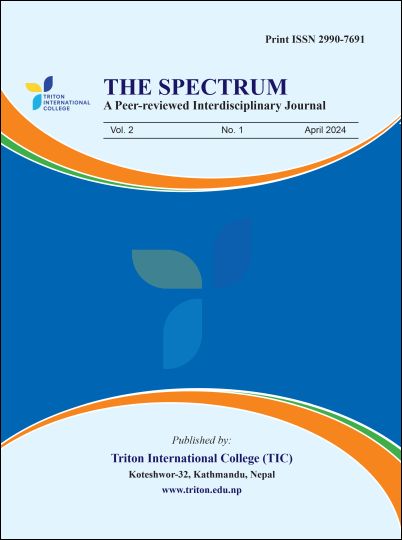Lady Whistledown: A Modern Tiresias in Bridgerton Bibechana Sharma Timsina
DOI:
https://doi.org/10.3126/spectrum.v2i1.64769Keywords:
Whistledown, Scandalous, Gossip, Secrets, MythAbstract
This paper explores Lady Whistledown in the Netflix series, Bridgerton, as a modern Tiresias. The series tells a story of people, especially the socio-economic life of people living in the Regency Era. Throughout the entire series, the character: Lady Whistledown narrates people’s lives through her society paper that exposes the scandalous secrets of people living in the society. Drawing on insights from Joshep Cambell's notion of myths, the paper argues that Whistledown’s narrativization of people’s secrets embeds mythical prominence as it deals with the complexities of people and is indeed an inseparable unit from human life. Although the mythical character belongs to the primordial period, Tiresias stays in the mindset of people in an archetypal mode. This archetypal character holds such a power that audiences fail to eradicate it from their memories as they create different forms in their minds. Consequently, this ultimately presents new forms with novel components that serve to inform humans through the behaviors they present. Whistledown exhibiting the quality of Tiresias exposes the secrets of aristocrats through her writing in the society paper. The analysis shows that she empowers characters and audiences through the playfulness of words and projects herself as a modern Tierasis restoring the elements of myths in modern form and evoking the rage to interrogate the societal norms where representation is treated with disparity. Thus, Whistledown despite being a modern character personifies a mythical character: Tierasis, who resists the discrepancies existing in society.
Downloads
Downloads
Published
How to Cite
Issue
Section
License
Copyright (c) 2024 The Author(s)

This work is licensed under a Creative Commons Attribution-NonCommercial 4.0 International License.
This license allows reusers to distribute, remix, adapt, and build upon the material in any medium or format for non-commercial purposes only, and only so long as attribution is given to the creator.




